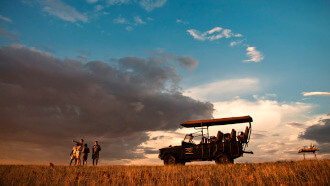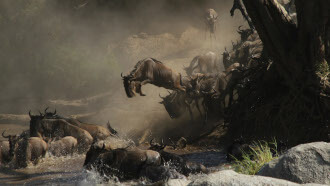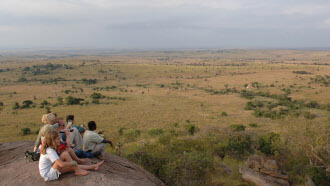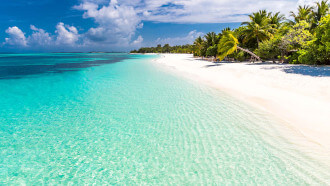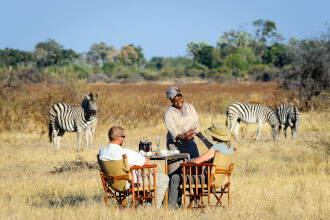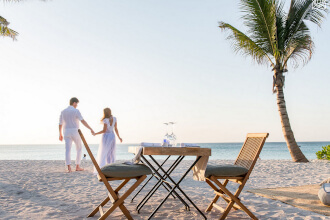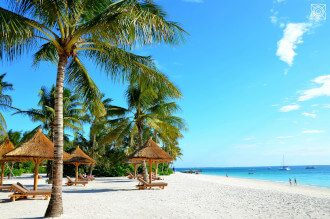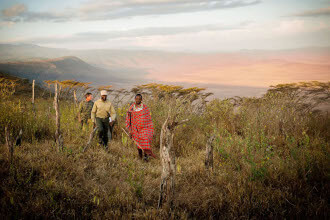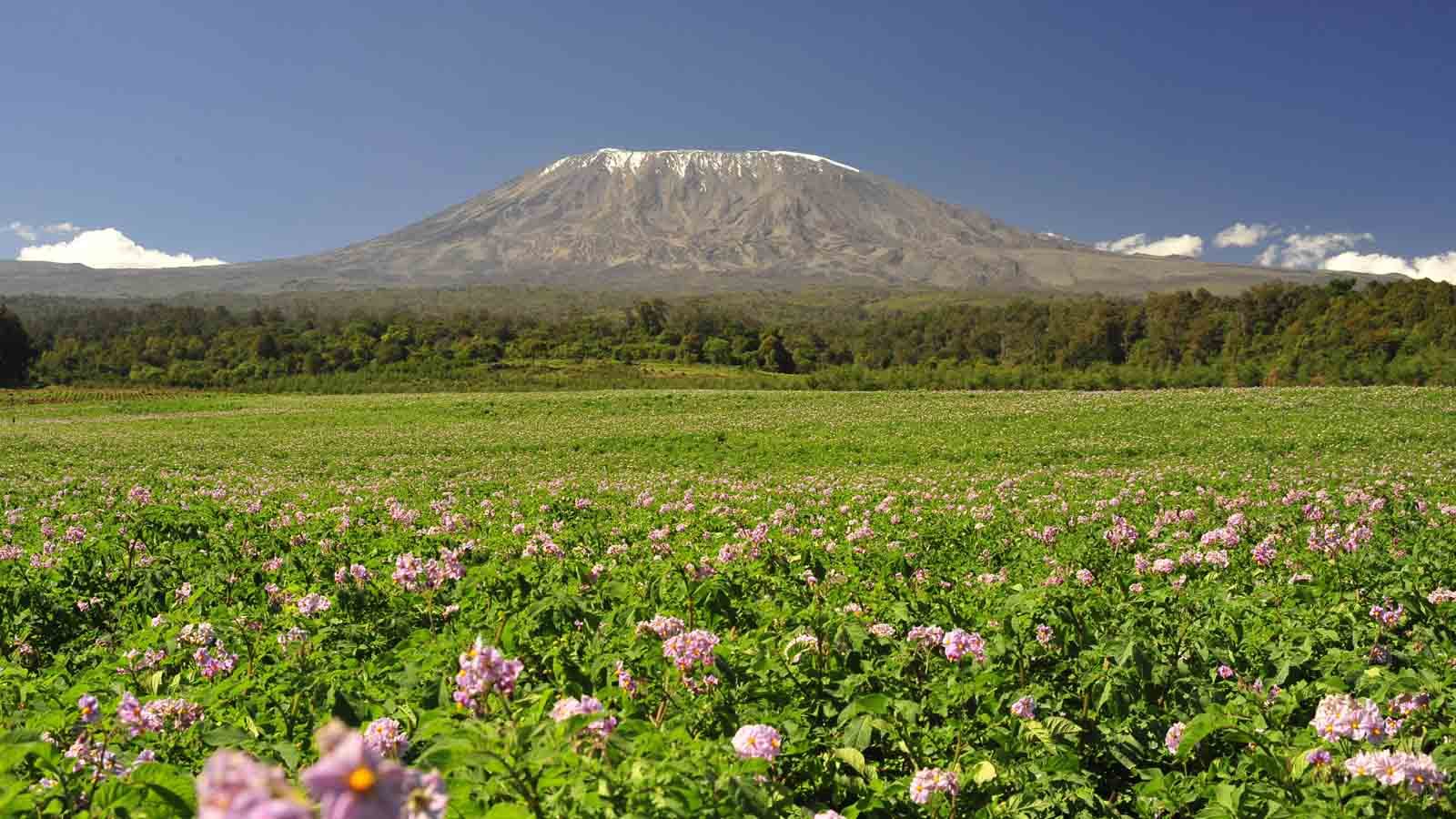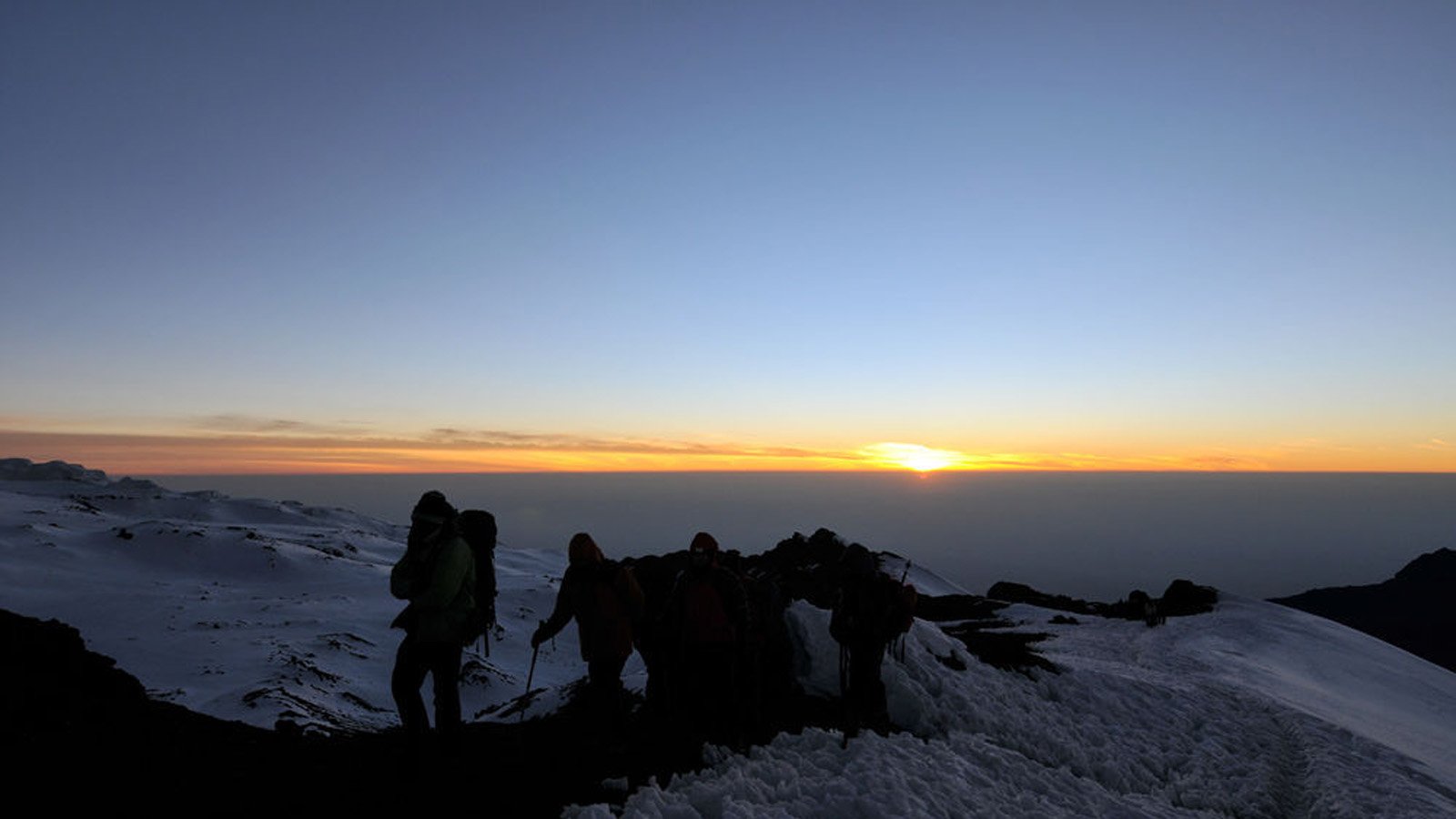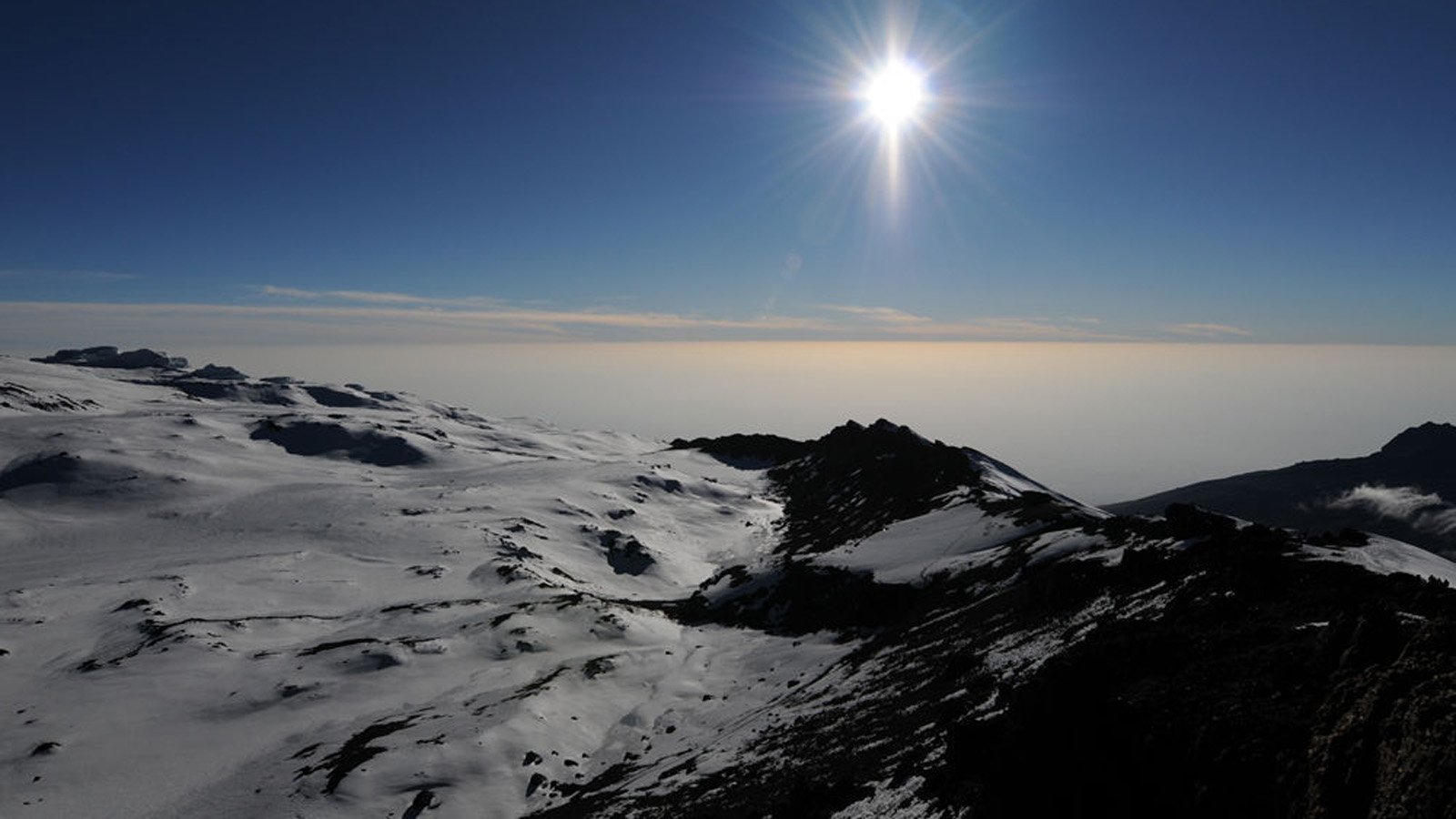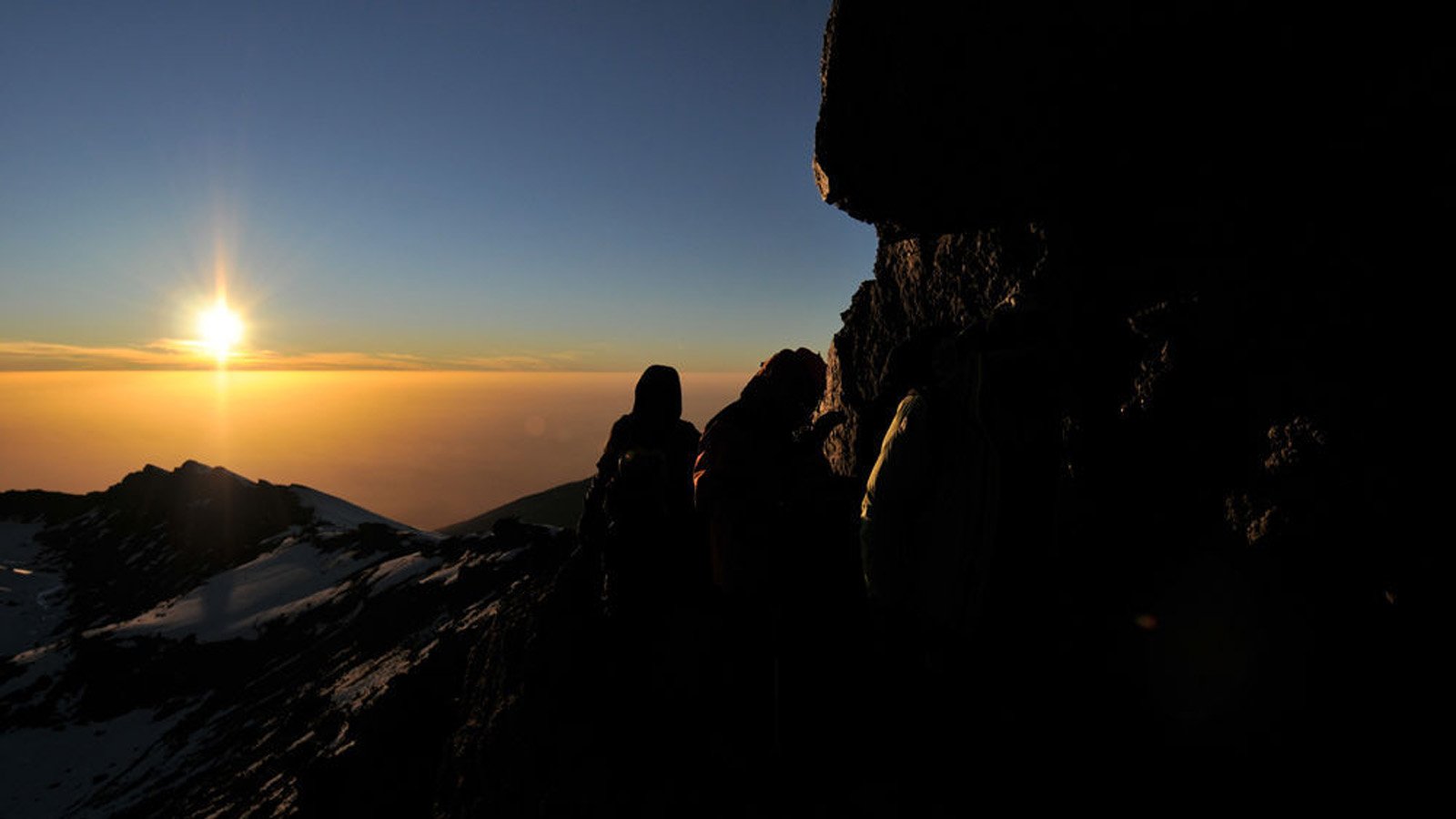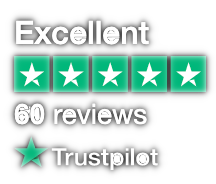Mt Kilimanjaro is located in North Tanzania next to some of the top safari parks in Africa, so while making an ascent it would be a shame not visit the northern parks and experience the Serengeti, Ngorongoro or Tarangire.
There are hundreds of operators that work on Mount Kilimanjaro but over the years we have decided to work with only 2 companies based on their safety track record, guides and cost. Climbing Kilimanjaro is potentially very dangerous so it's important to be with the right company!
A GUIDE TO CLIMBING KILIMANJARO
How high is Kilimanjaro?
Once you have reached the summit, you will be standing 5,895m or 19,340 feet high as Kilimanjaro is the highest free-standing mountain in the world. By comparison, Everest's highest peak is 8,848m above sea level. It is also commonly known as the roof of Africa, as it towers over East Africa, and the whole continent for that matter. It is so big, that if you stand at the bottom, you usually can't really see it...
Where is Kilimanjaro?
Kilimanjaro, unless climbed, is actually quite difficult to see in Tanzania. For the best view, hop over to Kenya's Amboseli National Park (if you can handle the crowds) for that iconic Kili backdrop view. If you are lucky, you will spot it on a plane from Nairobi, as it is situated on the Tanzania/Kenya border to the East of Arusha. It is easily accessible once in Tanzania to begin your climb...
Climbing Mount Kilimanjaro Cost
There are two choices when beginning to think about climbing Kilimanjaro - whether to go on a fixed departure climb with a group, or to go on a private climb. Per person the fixed departure dates begin at around $2,500 per person. Private climbs vary depending on how many climbers you are, and also which route. If you are a group more than 2, it could even be better value to do a private climb, but please do let us know and we can do the maths for you. We do not choose the cheapest operator, but one we have been working with for 20 years and trust wholly to take the best care of our clients.
The best time to climb Kilimanjaro: Mount Kilimanjaro Weather
March to end of May is the wet season on Mount Kilimanjaro and not a great time for trekking. The rest of the year is good though with the absolute peak season being similar to the best game viewing from July through to the end of October. Afterall, you want to be in with a chance of catching your summit on a clear day to get an amazing view from the highest point in Africa.
How long does it take to climb Kilimanjaro
This does depend on route, but the fastest assent can take 4 nights, though most people take 6-8 nights depending on route
Overall mountaineering fitness required
Although it is possible to simply trek a route to the pinnacle of Kili without relying on professional climbing equipment, it remains a hard and serious endeavour that requires a level of physical fitness, stamina and a realistic awareness of the potentially damaging effects of high altitudes. Many tour operators request that clients consult a doctor before attempting to scale the mountain, and have a physical check-up for overall fitness.
Climbing Kilimanjaro | The Routes
Climbing Kilimanjaro | The Phases
First Stage, Tropical Forest
With most of the old lowland forest now cultivated and settled, the first experience of the mountain environment begins with the dense vegetation of tropical montane forest between 1850m and around 2800m.
Cloud condensation mainly gathers around the forest, so this area is usually damp or drenched with rainfall, creating an intriguing mass of plant life and running rivers between endemic tree species. The area of heath just beyond the tree line also enjoys a relatively misty and damp environment as cloud clings around the density of trees. This is covered with heather and shrubs such as Erica Arborea and Stoebe Kilimandsharica, and a number of dramatic looking Proteas.
Open Moorland
From around 3,200m a wide expanse of moorland extends beyond the heath and the cloud line, so that here the skies are generally clear, making the sunshine intense during the days and the nights cool and clear.
The climbing incline remains gentle, but thinning oxygen provides less fuel to energise the muscles and can dramatically slow the pace of walking. Hardy endemic species of Giant Groundsels (Senecio) and Lobelia (Deckenii) towering up to 4m high thrive in this moorland zone and give the landscape a strangely primeval atmosphere.
Alpine Desert, Sparse Vegetation
Even higher, beyond 4,000m, oxygen levels are depleted further as the landscape develops into a more bizarre alpine desert, with sandy loose earth. Weather conditions are so intense and temperature fluctuations so dramatic that barely any plant species survive other than everlasting flowers, mosses and lichens. Only the odd lichen survives beyond 5000m, after Kibo Huts and beyond the Saddle, where the landscape is predominantly rock and ice fields. Here, climbers experience the final steep push to the summit.
Saddle to Summit
The easterly routes, Marangu, Mweka, Loitokitok and Rongai all converge west of the saddle near Gillmans Point, between the peaks of Mawenzi and Kibo. Kibos crater is roughly circular with an inner cone extending to 5,800m, (100m lower than the summit at Uhuru Peak).
At the centre an inner crater with walls between 12 and 20 m high contains another concentric minor cone, the centre of which falls away into the 360m span of the ash pit. This is the 120 metre deep central core of the volcano, and casts sulphurous boiling smoke from its depths despite the frozen, snowy outskirts.
Tanzania safari extensions
Having gone all the way to climb Kilimanjaro, most climbers choose to extend their trip with a Tanzanian safari or even some beach time in Zanzibar or on the mainland coast. It is the perfect way to round off the African holiday of a lifetime.
We don't just know Tanzania!
For more information on Tanzania, the best thing to do is to give us a ring for an impartial chat. Although we love Tanzania, we also love the rest of Africa too and have experts in all the main safari countries. If you are undecided as to where to visit, please do just drop us an email or give us a call!

